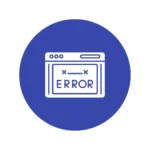When it comes to saving money, we usually think of a fixed deposit in a bank. Just visit the bank, provide your bank account details, and open an FD account in your name. That’s it!
This is what most of us would do to get a little higher interest rate than the savings bank rate, which is pretty low.
As a matter of fact, when you keep your money in a savings bank account, you would get an interest rate of around 2 to 3 percent per year.
This literally means that the fund that you have is idle and does not serve any purpose.
Today in this post, we are going to explore some of the government deposit schemes that offer higher interest rates than the normal FD account. Specifically, we will compare two of the most popular products in the banking industry.

A floating rate savings bond and the favourite Senior Citizen Savings Scheme.
The post will be useful for senior people who have retired from their jobs recently or are going to retire very soon.
So, if you are going to get terminal benefits, then read on. It will enable you to make better decisions.
So, without further adieu, let’s pick Floating Rate Savings Bonds and find out what they hold for us.
What is Floating Rate Savings Bond?

A floating rate savings bond is an interest bearing, non-tradable bond with a variable interest rate issued by the Reserve Bank either through authorised banks and financial institutions or directly through the RBI portal called RBI Retail Direct.
The interest rate of FRSB is linked to the National Savings Certificate, which is 35 basis points above the prevailing NSC rate.
As such, the bond is extremely useful for those who are risk averse. The scheme allows you to earn better or higher interest than the counterpart fixed deposit scheme.
Here is the product features of Floating Rate Savings Bonds:
| Scheme | Floating Rate Savings Bond 2020 |
| Scheme offered by | Reserve Bank of India |
| Tenor/Maturity period | 7 years |
| Investment amount or Issue price | ₹1000 in multiples of ₹1000 with no maximum cap |
| Interest Rate | Linked to National Savings Certificate (NSC) plus 35 bps |
| Premature closure | Allowed only for senior citizen |
| Taxation | Subject to TDS as per the Income Tax Act 1961 |
| Eligibility Criteria | A resident Indian can purchase the bond in single name or jointly with another person, HUF and a parent or legal guardian in favour of a minor. |
| Authorised Banks | Designated SBI Branches, Axis bank Ltd.., IDBI bank Ltd.., HDFC bank, ICICI bank Ltd.., and other nationalised banks. |
| Medium of application | It can be applied both offline and online. RBI Retail Direct is also an online portal where FRSB can be purchased. |
Eligible Criteria: Can You Invest in FRSB?
An individual who is a resident of India can invest in Floating Rate Savings bonds. This includes investment in a single name or jointly with another person.
Meaning you can have this bond alone in your name as well as with your spouse or children.
So, here are the eligible criteria for investing money in FRSBs 2020:
- Any individual who is a resident of India.
- You can have the bond in joint names.
- A parent can invest in the favour of a minor.
- Hindu Undivided Family (HUF) can invest in the bond.
How to Invest in Floating Rate Savings Bonds
If you are looking to invest in floating Rate Savings Bond 2020, you can either visit your bank or create an account on the RBI Retail Direst portal to do so.
The good thing is that you can invest in FRSB online. Authorized banks and financial institutions provide the facility of online investment on FRSB on their official website.
Or, as we have said earlier, you can open your account at RBI Retail Direct to invest in the bond directly.
If you prefer visiting your bank, follow these steps:
- Step 1: You need to have a bank account in order to invest in FRSB. Here’s why? If your investment cost is below ₹20,000, then you might be able to invest without having an account, but if the amount goes beyond ₹20,000, you will have to fund it with either a cheque or a demand draft. And as you know, DD purchases beyond ₹20,000 require a bank account. So, if you don’t have a bank account, open one.
- Step 2: Compile your KYC documents and make a copy of your ID card and PAN card. Acceptable IDs are as follows:
- Voter Card
- Aadhaar Card
- Passport
- Driving Licence
- Job card issued by NREGA
- Step 3: Get the application form, fill it up and submit it to the concerned bank staff. Submit the application along with your KYC documents.
- Your bank may ask for a cancelled cheque. Carry along when visiting the bank.
- Step 4: Waiting time. Once the verification process is done by the bank, your transaction will be soon over. You will get the investment details in demat form.
- You will also get a certificate of holding as proof of your investment.
Advantages of Floating Rate Savings Bonds

There are several advantages to investing in floating rate savings bonds.
The bond is extremely secure, as the benchmark rate is set with a national savings certificate. And as you know, NSC is a secure government backed scheme, so FRSB become a safe and reliable long term investment option.
Here are some of the benefits of investing in FRSB:
- You would get a decent interest rate with FRSB. If you want to have less risk exposure, then this bond might be the one. Till the end of December 2023, the rate is 8.05 percent.
- Any Indian individual can invest in this bond.
- Nomination facilities are available.
- You can either invest in your bank or on the RBI Retail Direct site.
- The interest rate is reset periodically. As and when the rate of NSC changes, there will be a change in the FRSB rate too. It’s been observed that there was a huge jump from 6 to 8 percent in the last interest renewal. With this trend, it’s expected to grow more in the coming days.
- One of the safest forms of investment for those who fall into the risk averse category. Especially for seniors and people with low risk appetites.
- The bond has a flexible option to receive an interest payout at the end of the term, which is 7 years, or if you want, you can execute an interest payout every 6 months.
- The bond can create an alternate source of income with the interest payout option.
- You can start investing in the bond with ₹1000 and increase it in multiples of ₹1000 with no maximum cap. As such, the investment in FRSB is quite doable for any Indian individual.
Disadvantages of Flaoting Rate Savings Bonds
As we have observed some of the benefits of FRSB, it’s worth noting some of the disadvantages of the bond.
Why should you not invest in FRSB? Here are the reasons for it:
- The duration of the bond is 7 years. It’s considered a long-term investment, and the prevailing rate of 8.05 percent is not sufficient when compared to other investment options.
- Floating Rate Savings Bonds are subject to TDS as per the prevailing Income Tax Act, which is deductible as and when the interest is paid out.
- A variable rate means it may give you a lower rate too; if the NSC rate falls, then it certainly would yield a lesser return.
- Pre-mature breaking of the bond is not possible. It is possible only for senior people whose age is beyond 60.
- FRSB is not tradable in secondary markets. It means banks, non banking financial companies, and other financial institutions will not accept the bond as collateral for a loan. It means bank offers no loan against FRSB.
- The bond is non-transferable too.
- A floating-rate savings bond is issued only in the form of non-cumulative. Meaning it can create a regular source of income half-yearly, but it can’t be expected to earn cumulative interest over the term of the bond.
- Since interest is paid out every 6 months, there is no question of compound interest or earning interest on interest.
Premature Withdrawal of FRSB
Unfortunately, premature withdrawal or breaking the bond before its maturity is not allowed.
However, premature withdrawal is permitted for people 60 years of age and older.
To understand it better, here are the lock-in of different age group.
| 60 to 70 years of age | The investor would get 6 years as a lock-in period. |
| 70 to 80 years of age | 5-year lock-in period |
| 80 years and above | 4-year lock-in period |
As per the lock-in period applicable according to the investor’s age, the bond can be withdrawn.
Premature withdrawal of FRSB comes at cost. The bond issuer will penalise the bond holder at the rate of 50 percent of interest due and payable for the last 6 months of the holding period.
If the bond is in the joint names and one of the joint holder is senior citizen, premature withdrawal is permitted according to the age of the bond holder whose age is beyond 60 years
A Quick Review
Now that we have a pretty good idea, how and what FRSB offers us.
It’s undeniably one of the safest modes of investment for those who want a little higher interest than the bank fixed deposit, but at the same time, there is minimal risk exposure for the investor.
But what we have observed in the product details is that the bond is not going to help those who can manage and take a sight higher risk in investment.
Especially for young generations, it does not serve any purpose.
Young people might want to go for other lucrative options, such as buying equity shares or investing in mutual funds and the like, that could generate a much better return.
Another downside of the bond is that the interest earned is subject to tax deduction at source. If the interest income is ₹10000 and beyond, you will be taxed as per your tax slab.
Besides, 7 years is quite a long period, and if invested in other forms of investment, your money would have generated more income.
The Other Invest Option
Very close to FRSB 2020, we have SCSS 2004, which is a government backed fixed deposit scheme.
When we went through the product details of the Senior Citizen Savings Scheme, we were amazed by its versatility.
The scheme runs for 5 years, with an option to break prematurely. Bank offers the Fixed Deposit at 8.2 percent per year and you get the option of interest payout every quarter.
As such, SCSS become more lucrative than FRSB. The present rate of SCSS is higher than that of FRSB, and the frequency of interest payout is also better in SCSS. On top of that, the tenure of SCSS is shorter.
Overall, SCSS is a winner.
Now lets dig further into the product details of Senior Citizen Savings Scheme.
Senior Citizen Savings Scheme
A Senior Citizen Savings Scheme is a government backed fixed deposit scheme that allows the investor to create an alternate source of income by way of an interest payout quarterly.
A maximum of ₹30 lakhs can be invested in SCSS 2004. The FD offers you an attractive interest rate of 8.2 per year.
With an investment of ₹30 lakhs, which is the maximum capping of the product, you can get a quarterly income of ₹61500.
Of which a tax of 10 percent will be deducted at source.
The product details of the Senior Citizen Savings Scheme 2004 are as follows:
| Scheme | Senior Citizen Savings Scheme 2004 |
| Scheme offered by | Banks |
| Tenor/Maturity period | 5 years |
| Investment amount or Issue price | ₹1000 in multiples of ₹1000 with a maximum cap of ₹ 30 lakhs |
| Interest Rate | 8.2 percent as on 31/12/2023 |
| Premature closure | Allowed with penalties |
| Taxation | Subject to TDS as per the Income Tax Act 1961 |
| Eligibility Criteria | Retired senior person whose age is 60 and above |
| Medium of application | Bank visit is a must |
To know more about the eligibility and product details of SCSS, read our post on SCSS.
Other than SCSS, you have non-callable fixed deposits from various Indian banks that offer higher interest rates.
The only drawback of this non-callable FD is that the FD has a lock-in period.
For instance, SBI has Sarvottam FD schemes in 2 variants, one is for a year tenor and the other is for a 2-year tenor, which offer 7.5 to 7.9 percent interest per year.
But these FDs can be withdrawn only upon maturity.
Likewise, you can explore your bank’s various FD schemes to avail of better returns. Be it callable or non-callable, if you can stick to it’s terms, you can upscale your investment even without exposing yourself to market risks.
Suggestions
Its understandable that some of us might prefer safe investments to taking risks to create wealth. But have you ever considered what the value of your savings will be a few years down the line?
We have seen how the commodity price of any good has shot up over the last decade.
The value of ₹500 five years ago: how many things could you buy with ₹500? Now what’s its value?
Nothing at all, even a cup of coffee at a shopping mall will cost you ₹200. Just imagine that.
Your FD or secured savings today will have no value in the years to come. Which means you have to take certain risks in order to meet your future expenses.
At present, the mutual fund market is going quite well. With proper advice from your bank or from professionals, you could harness the power of compounding returns in mutual funds.
Be it an SIP (Systematic Investment Plans) or a lump-sum investment, you can do it in a much better way.
So, our suggestion would be, take risks while you can. Not all the funds should be invested in risk bearing portfolios. You can at least consider investing 30 to 40 percent of your income toward equity for a long term plan. Say for 10 years and above.
You can also set your investment timelines as per your needs.
Conclusion: Is a Floating Rate Savings Bond Right for You?
Well, FRSB is a good savings plan. It gives you the opportunity to create an alternate source of income twice a year. The bond is suitable for senior people or those who are risk averse.
But if you are seriously thinking of creating wealth out of your savings, then the bond might not be able to meet your expectations.
Otherwise, the FRSB 2020 is a safe investment that can give you a decent return with an interest rate higher than the fixed deposit.
Suitable for a senior person whose risk appetite is lower than others. But when it compares to SCSS, you may want to rethink it before you go for it.







